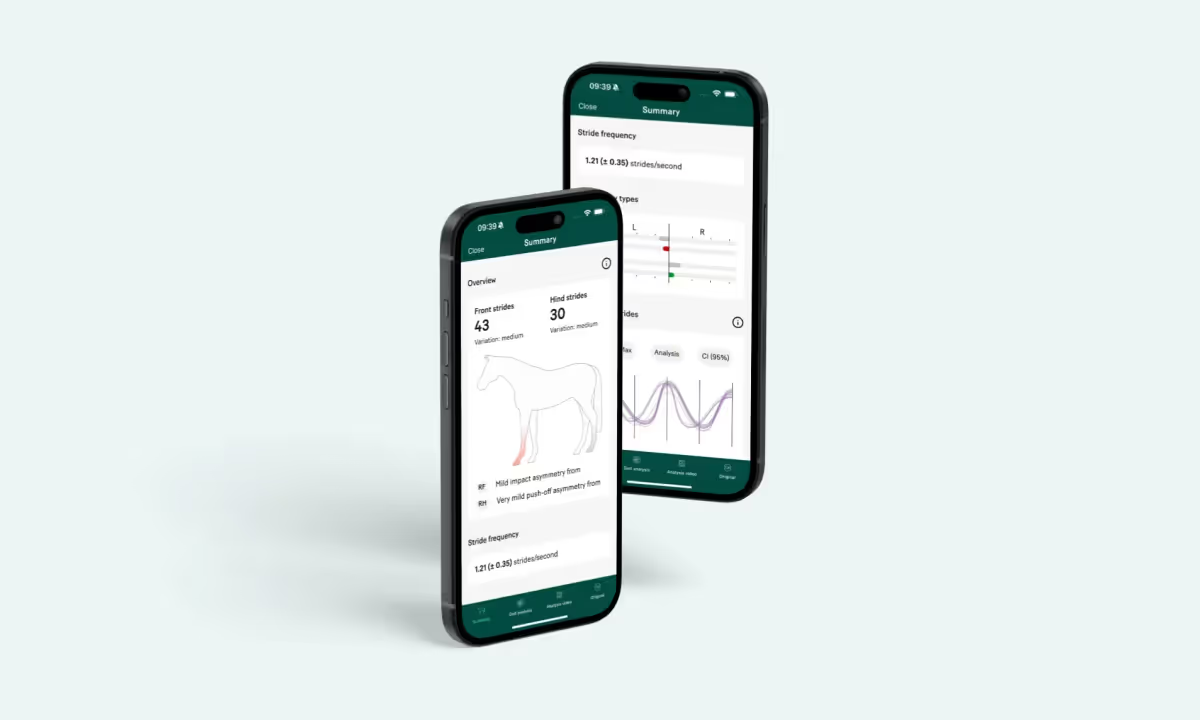
9 April 2024
“When a horse improves its gait quality, we often observe a decrease in stride frequency at the same speed,” says Elin Hernlund, Chief Medical Officer and co-founder of Sleip.
Lame horses on the other hand, can decrease the limb loading per stride by decreasing the stride length and increasing the stride frequency – taking more strides over a given distance. Horses with lameness issues, particularly those with multi-limb lameness, tend to exhibit short, choppy strides. A vet often observes longer, more relaxed strides when the lameness is blocked or successfully treated, provided the before-and-after trot-ups are performed at the same speed.
Examining changes in stride frequency can provide valuable insights into the horse’s biomechanical health and response to various factors, as long as the speed is kept constant.
“The stride frequency measurement is primarily useful in establishing changes. For instance, measurements taken before and after intervention or measurements compared to an established baseline of the individual's “normal” stride frequency", says Elin Hernlund.
The average stride frequency of the over 100 000 straight line recordings analysed with the Sleip app to date is 1.36 strides per second.